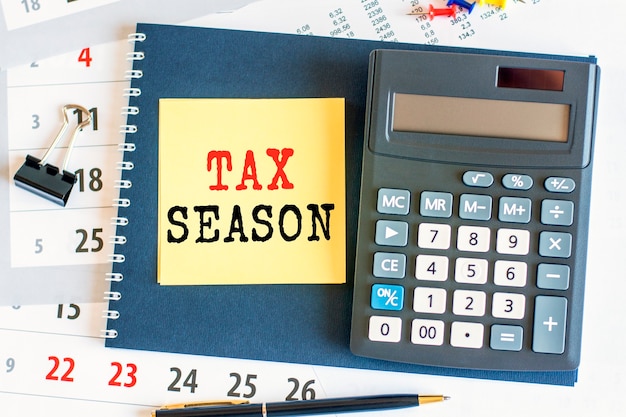Quick Read
17 Legitimate Ways to Get Free Money from the Government: A Comprehensive Guide
Are you looking for ways to increase your income and reduce financial stress? Believe it or not, there are several legitimate ways to get free money from the government. In this comprehensive guide, we’ll explore 17 different methods that can help you boost your income through various programs and initiatives. From grants and tax credits to benefits and other forms of assistance, these opportunities are available to eligible individuals and families.
Earned Income Tax Credit (EITC)
The Earned Income Tax Credit is a refundable tax credit for low- and moderate-income workers. If you’re eligible, the EITC can reduce your federal income taxes or even result in a tax refund.
Child Tax Credit
Child Tax Credit is a tax credit designed to help families with children offset the costs of raising their kids. Eligible taxpayers may receive up to $2,000 per child under the age of 17.
Supplemental Nutrition Assistance Program (SNAP)
Formerly known as food stamps, the Supplemental Nutrition Assistance Program (SNAP) helps eligible individuals and families purchase food. Eligibility is based on income, household size, and other factors.
Temporary Assistance for Needy Families (TANF)
Temporary Assistance for Needy Families (TANF) is a cash assistance program that provides financial support to eligible families with children. The program aims to help families become self-sufficient by providing employment services and other support.
5. Social Security Disability Insurance (SSDI)
If you have a disability that prevents you from working, you may be eligible for Social Security Disability Insurance (SSDI). This program provides monthly payments to individuals who meet the requirements.
6. Supplemental Security Income (SSI)
Supplemental Security Income (SSI) is a needs-based program that provides monthly payments to eligible individuals who are aged, blind, or disabled. Unlike SSDI, SSI does not require the applicant to have a work history.
7. Veterans Benefits
Veterans benefits are available to veterans and their survivors. Depending on your eligibility, you may be able to receive disability compensation, pension benefits, or other types of assistance.
8. Student Grants
Student grants are forms of financial aid that do not need to be repaid. They are typically based on financial need and can help students cover tuition, books, and living expenses.
9. Federal Grants
Federal grants
are funds provided by the federal government to support various projects, research initiatives, and educational programs. Eligibility and application requirements vary.
10. Small Business Grants
Small business grants
are funds awarded to small businesses to help them start, grow, or expand. Eligibility requirements and application processes vary depending on the specific grant program.
1Energy Efficiency Grants
Energy efficiency grants
are funds provided to help homeowners and businesses improve their energy efficiency. These grants can be used for a variety of projects, such as insulation upgrades, HVAC system replacements, and solar panel installations.
1Education Grants
Education grants
are funds provided to help students cover the cost of their education. These grants can be used for tuition, books, and other educational expenses.
1Scholarships
Scholarships
are forms of financial aid that do not need to be repaid. They are typically merit-based or need-based and can be used to cover tuition, books, and other educational expenses.
1Home Energy Assistance Program (HEAP)
Home Energy Assistance Program (HEAP)
is a federally-funded program that helps eligible low-income households pay their heating bills. Eligibility requirements and application processes vary by state.
15. Community Services Block Grant (CSBG)
Community Services Block Grant (CSBG)
is a flexible funding program that supports community-based initiatives aimed at reducing poverty and promoting self-sufficiency. Eligibility and application requirements vary.
16. Low Income Home Energy Assistance Program (LIHEAP)
Low Income Home Energy Assistance Program (LIHEAP)
is a federally-funded program that helps eligible low-income households pay their heating and cooling bills. Eligibility requirements and application processes vary by state.
17. Weatherization Assistance Program (WAP)
Weatherization Assistance Program (WAP)
is a federally-funded program that helps eligible low-income households reduce their energy usage and save money on heating and cooling costs by providing weatherization services, such as insulation upgrades, air sealing, and HVAC system repairs.
Unlocking the Mystery: Free Money from the Government
In today’s financial landscape, many people are always on the lookout for ways to supplement their income. Amidst various schemes and offers, the prospect of receiving free money from the government can be incredibly appealing. However, it’s essential to approach such opportunities with a healthy dose of skepticism and critical thinking, as not all offers are legitimate.
The Allure of Free Money
There are several reasons why individuals might be interested in obtaining free money from the government. Some may face unexpected financial emergencies, while others might be looking for ways to pay off debts or invest in their future. Additionally, receiving financial assistance from the government can provide a sense of security and relief during uncertain economic times.
Beware of Scams
Unfortunately, not all offers of free money are genuine. Scammers often prey on people’s desperation and promise quick financial gains in exchange for personal information or upfront fees. These scams can lead to significant losses, both financially and emotionally.
Common Scams
Some common scams involving free government money include:
- Grants for personal expenses: Scammers might offer grants for everyday expenses like rent, utilities, or groceries. However, these grants do not exist, and applicants may be asked to pay fees or provide personal information.
- Unemployment benefits for nonexistent jobs: Scammers might promise unemployment benefits for jobs that don’t actually exist. In these cases, applicants may be asked to provide sensitive information or pay fees.
- Lottery scams: Scammers might claim that the recipient has won a lottery or sweepstakes they didn’t enter. To collect their winnings, recipients are often asked to pay fees or provide personal information.
Staying Informed and Protecting Yourself
To avoid falling victim to government money scams, it’s crucial to stay informed and protect yourself. Here are some tips:
Verify the source
Always double-check the legitimacy of any offer by contacting the supposed government agency directly. Use the phone number or website provided on the official government website, rather than information given in an unsolicited email or letter.
Be wary of unsolicited offers
Legitimate government programs do not contact individuals out of the blue with offers of free money. If you receive an unsolicited offer, it’s likely a scam.
Never share personal information
Scammers often ask for sensitive personal information, such as Social Security numbers or bank account details. Never share this information with anyone who contacts you unsolicited.
Research before applying
Always research any government program or offer thoroughly before applying. Visit the official government website for accurate and up-to-date information.

Tax Credits: The IRS offers various tax credits to help taxpayers reduce their tax liability. Here are some of the most common tax credits and their details:
Earned Income Tax Credit (EITC)
This credit is designed for low- to moderate-income working individuals and families. The eligibility requirements include having earned income, being a U.S. citizen or resident alien, and meeting certain income limits. The amount and calculation depend on your filing status and the number of qualifying children in your household. To apply, you can either file a paper return or use tax software that calculates EITC for you.
Child Tax Credit
This credit is available to taxpayers with dependent children under the age of 17. The eligibility requirements include having a valid Social Security Number for each qualifying child and meeting certain income limits. The amount and calculation is based on the number of eligible children and your taxable earnings. To apply, you can claim the credit when filing your tax return or use IRS Free File to prepare and e-file your taxes for free.
Education Credits
There are two education credits: the American Opportunity Tax Credit (AOTC) and the Lifetime Learning Credit (LLC). The eligibility requirements include being a student, paying qualified education expenses, and meeting certain income limits. For the AOTC, you can claim the credit for each eligible student up to a maximum of $2,500 per year. The LLC allows you to claim 20% of the first $10,000 of qualified education expenses each tax year, with no limit on the number of years you can claim it. The amount and calculation for both credits depend on your income level and the amount of qualified education expenses paid during the tax year. To apply, you can claim the credit when filing your tax return or use Form 8863 (Education Credits) to calculate and report the credit amount.
Energy Efficient Home Improvement Credit
This credit is available for homeowners who make certain energy-efficient improvements to their homes. The eligibility requirements include installing qualified energy efficiency products or making necessary improvements that save energy. The amount and calculation depends on the type of improvement, with a maximum credit limit of $500 for all improvements combined in one tax year. To apply, you can claim the credit when filing your tax return or use Form 5695 (Residential Energy Efficient Property Credit) to calculate and report the credit amount.

Government Grants: The U.S. government offers various types of grants to support different sectors and individuals. In this paragraph, we will focus on three main categories: Federal Grants for small businesses, education, and housing, as well as Research Grants from the National Science Foundation (NSF) and the National Institutes of Health (NIH).
Federal Grants for Small Businesses:
The Small Business Innovation Research (SBIR) and Small Business Technology Transfer (STTR) programs are competitive grants designed to encourage small businesses to engage in research and development. Eligibility includes being a domestic, for-profit business with fewer than 500 employees. To apply, registration is required on link and submission of a proposal in response to a specific solicitation.
Educational Grants:
For students seeking financial assistance, numerous Federal Grants are available. The Federal Pell Grant, for instance, provides need-based financial aid to undergraduates. Eligibility is determined based on the student’s Expected Family Contribution (EFC) and the cost of attendance at their chosen institution. Students can apply for the Pell Grant by submitting a Free Application for Federal Student Aid (FAFSA).
Another grant is the Federal Supplemental Educational Opportunity Grant (FSEOG), which targets students with exceptional financial need. Eligibility and application process are similar to the Pell Grant.
The Teacher Education Assistance for College and Higher Education (TEACH) grant supports students pursuing a teaching degree or certification. Eligibility requirements include agreeing to teach in a low-income school or educational service agency for at least four years within eight years of graduation. To apply, students complete the FAFSA and must also sign a TEACH Grant Agreement to Serve.
Housing Grants:
For individuals and families requiring housing assistance, the U.S. government offers several grant programs. The Public Housing program provides affordable housing for eligible families and individuals. Eligibility is determined based on income, family size, and other factors. To apply, applicants must contact their local Public Housing Agency.
The Section 8 Housing Choice Voucher Program, also known as the Housing Assistance Payment (HAP) program, allows eligible families to rent private apartments or houses while the government pays a portion of the rent. Eligibility is based on income and family size. To apply, interested individuals must contact their local Public Housing Agency or housing authority.
Research Grants (National Science Foundation, National Institutes of Health):
The National Science Foundation (NSF) and the National Institutes of Health (NIH) offer competitive research grants to individuals and organizations. Eligibility varies depending on the specific grant, but applicants typically must hold a doctoral degree or have a commitment from an institution to support their research project. Applications for NSF grants are submitted electronically through the Research and Related Activities (R&RA) system, while NIH applications are submitted through the Electronic Submission of Grant Applications (e-FOGAR) system.

Social Security Benefits:
Social Security Disability Insurance (SSDI):
SSDI is a federal insurance program that pays disability benefits to individuals who are unable to work due to a severe and long-term disability. The Social Security Administration (SSA) administers this program, which is funded through payroll taxes.
Eligibility Requirements:
To be eligible for SSDI benefits, an individual must meet the following requirements:
- Work Credits:: The person must have worked long enough and paid Social Security taxes.
- Disability:: The disability must be severe, which means it prevents the individual from doing any substantial gainful activity.
- Long Term:: The disability must last or be expected to last for at least one year or result in death.
How to Apply:
To apply for SSDI benefits, an individual can:
- Apply online at link
- Call the SSA at 1-800-772-1213 to make an appointment to apply in person.
- Apply by mail using the application for disability benefits found in the blue book or on the SSA website.
Supplemental Security Income (SSI):
Eligibility Requirements:
SSI is a needs-based program that provides monthly payments to individuals who are 65 years or older, blind, or disabled and have limited income and resources. Unlike SSDI, there is no work history requirement for SSI.
How to Apply:
To apply for SSI benefits, an individual can:
- Apply online at link
- Call the SSA at 1-800-772-1213 to make an appointment to apply in person.
- Apply by mail using the application for SSI found in the blue book or on the SSA website.
Survivor Benefits:
Eligibility Requirements:
Survivor benefits are paid to eligible family members of a deceased worker, including widows or widowers, children under age 18 (or age 19 if still in high school), and disabled adults.
How to Apply:
To apply for survivor benefits, an individual can:
- Apply online at link
- Call the SSA at 1-800-772-1213 to make an appointment to apply in person.
- Apply by mail using the application for survivor benefits found in the blue book or on the SSA website.

5. Unemployment Insurance:
Eligibility Requirements
Unemployment Insurance (UI) is a social safety net program designed to provide temporary financial assistance to eligible individuals who are unemployed through no fault of their own. To be eligible for UI benefits, applicants must meet certain requirements:
- Monetary Eligibility: Applicants must have earned a minimum amount of wages during a specified base period, which is usually the first four of the five most recent completed quarters.
- Duration of Unemployment: Applicants must be currently unemployed or have worked their last day with an employer during the previous week.
- Reason for Job Separation: Applicants must be able to demonstrate that they were laid off, discharged due to reasons beyond their control, or quit their job for good cause.
How to File for Unemployment Benefits
If an individual meets the eligibility requirements, they can file for UI benefits by:
- Creating an account on their state’s unemployment insurance website.
- Filing a claim and providing necessary documentation, such as proof of identity, social security number, and earnings history.
- Certifying their weekly eligibility by reporting their job search efforts and availability for work.
Extended Benefits and Emergency Unemployment Compensation
During periods of high unemployment, states may offer extended benefits for eligible applicants who have exhausted their regular UI benefits. Additionally, during economic downturns or natural disasters, the federal government may provide emergency unemployment compensation to supplement state UI programs and help cover the costs of extended benefits.
Extended Benefits
The extension of regular unemployment benefits typically comes in the form of:
- PEUC (Pandemic Emergency Unemployment Compensation): Provides an additional 13 weeks of benefits to those who have exhausted their state UI benefits due to the COVID-19 pandemic.
- EEUC (Extended Emergency Unemployment Compensation): Offers up to an additional 20 weeks of benefits beyond the regular state UI period.
Emergency Unemployment Compensation
The federal government’s emergency unemployment compensation programs have included:
- Federal-State Extended Duration Program (EUC): Provides up to an additional 20 weeks of benefits beyond state UI limits.
- Federal Emergency Unemployment Compensation (FEUC): Offers up to an additional 53 weeks of benefits.
Conclusion
UI is a crucial component of the social safety net, offering temporary financial assistance to eligible individuals during periods of unemployment. Through various eligibility requirements and benefit extensions, this program helps bridge the gap between job loss and reemployment.

6. Food Assistance Programs:
Supplemental Nutrition Assistance Program (SNAP)
SNAP, formerly known as Food Stamps, is a
Eligibility Requirements:
To be eligible for SNAP, applicants must meet certain income and asset requirements. Eligibility is determined on a
How to Apply:
To apply for SNAP, individuals can contact their local
Women, Infants and Children (WIC) Program
WIC is a
Eligibility Requirements:
To be eligible for WIC, applicants must meet income and categorical requirements. Income guidelines vary by state, but most programs serve families with incomes at or below 185% of the federal poverty level. Categories include pregnant and postpartum women, infants, and children under five who are determined to be at nutritional risk based on certain health or developmental criteria.
How to Apply:
To apply for WIC, individuals can contact their local

Veterans Benefits
Disability Compensation
Disability Compensation is a monetary benefit paid to veterans who are
Gather necessary documentation
Complete VA Form 21-526, Veterans Application for Compensation and/or Pension
Submit the application and documentation to their regional VA office
Dependency and Indemnity Compensation
Dependency and Indemnity Compensation is a benefit for survivors of deceased veterans who were receiving VA disability compensation or VA pension at the time of death. Eligibility requirements include being a surviving spouse, child, or parent. To apply, survivors should:
Gather necessary documentation
Complete VA Form 21P-534, Application for Dependency and Indemnity Compensation
Submit the application and documentation to their regional VA office
Pension Benefits
Pension Benefits are a need-based monetary benefit for wartime veterans and their survivors. Eligibility requirements include being 65 years old or older, having limited income and assets, and a wartime period of service. To apply, veterans should:
Gather necessary documentation
Complete VA Form 21-527, Application for Pension
Submit the application and documentation to their regional VA office
Education and Vocational Rehabilitation
The VA’s Education and Vocational Rehabilitation program assists veterans in returning to work after a service-connected disability. Eligibility requirements include having a service-connected disability, being unemployed or underemployed, and a VA disability rating of at least 10%. To apply, veterans should:
Contact their VA Vocational Rehabilitation Counselor
Complete VA Form 21-1880, Application for VA Education and Training
Attend an interview to discuss their career goals and eligibility
8. Energy Assistance Programs:
Low Income Home Energy Assistance Program (LIHEAP)
The Low Income Home Energy Assistance Program (LIHEAP), a federal program, is designed to help eligible low-income households pay for winter heating costs. Eligibility is typically based on income and household size, with priority given to those most in need, such as the elderly, disabled, and families with young children. To apply for LIHEAP, households must contact their state or local social service agency. The application process may include submitting documents verifying income and household size. Once approved, households receive a one-time payment or ongoing subsidies for energy bills.
Weatherization Assistance Program (WAP)
Another valuable energy assistance program is the Weatherization Assistance Program (WAP). WAP aims to help eligible households reduce their energy consumption and save money on utility bills by improving the energy efficiency of their homes. Eligibility for WAP is generally the same as for LIHEAP, but application processes may vary from state to state. To apply, households should contact their state or local energy office. The application process may involve an energy audit to assess the home’s current energy efficiency and identify areas for improvement. Once approved, households receive cost-effective weatherization measures, such as insulation, caulking, or window replacements, to help reduce their energy usage and lower utility bills.

Student Loan Forgiveness Programs: are initiatives designed to help students manage their student loan debts by forgiving or reducing the amount they owe. Two prominent programs are the
Public Service Loan Forgiveness (PSLF)
The
Public Service Loan Forgiveness (PSLF)
program forgives the remaining balance on your Direct Loans after you have made 120 qualifying monthly payments under a qualifying repayment plan while working full-time for a qualifying employer. This includes government organizations at any level, tax-exempt 501(c)(3) organizations, and other types of not-for-profit organizations.
Eligibility Requirements:
To be eligible for PSLF, you must:
- Have Direct Loans.
- Be enrolled in an eligible repayment plan at the time of making your qualifying payments (usually the Income-Based Repayment or Pay As You Earn plans).
- Make 120 qualifying monthly payments while working full-time for a qualifying employer.
How to Apply:
To apply, submit the link annually to ensure you are making qualifying payments. After making the required 120 payments, submit an employer certification form and a PSLF application.
Another student loan forgiveness program is the
Teacher Loan Forgiveness
The
Teacher Loan Forgiveness
program offers up to $17,500 or $5,000 in loan forgiveness for teachers who have been employed full-time in a low-income school or educational service agency for five consecutive academic years.
Eligibility Requirements:
To be eligible for this program, you must:
- Have a federal student loan.
- Be employed full-time as a teacher for five consecutive academic years at a low-income school or educational service agency.
How to Apply:
To apply, complete the link and provide necessary documentation to your loan servicer. The loan servicer will process the application and provide further instructions on receiving forgiveness.
Additionally, consider applying for
Income-Driven Repayment Plans
Income-driven repayment plans adjust your monthly loan payments based on a percentage of your discretionary income. With these plans, you may qualify for student loan forgiveness after making consistent payments over an extended period.
Eligibility Requirements:
To be eligible for income-driven repayment plans, you must have federal student loans and demonstrate financial need. Some plans base eligibility on family size and state of residence as well.
How to Apply:
To apply for income-driven repayment plans, contact your loan servicer and request the necessary application form. Provide documentation of your income and family size to determine eligibility and establish a monthly payment amount.

10. 9. State and Local Government Assistance:
Overview of state and local government assistance programs
State and local governments offer various assistance programs to help individuals and families in need. These programs aim to provide essential services and resources for housing, food, healthcare, education, and employment training.
Temporary Assistance for Needy Families (TANF)
Temporary Assistance for Needy Families (TANF), also known as welfare, is a state-run program that offers cash assistance and support services to eligible families. The goal of TANF is to provide temporary financial assistance while helping families achieve self-sufficiency.
Eligibility requirements:
To be eligible for TANF, applicants must meet specific income and other requirements. Eligibility criteria vary by state but generally include low income, U.S. citizenship or eligible immigration status, and residency in the state.
How to apply:
To apply for TANF, contact your local department of human services or social services office. Applicants will need to provide documents such as proof of income, identification, and residency.
Food Banks and Community Kitchens
Food banks and community kitchens offer meals and groceries to individuals and families in need. These programs are often run by non-profit organizations or religious institutions.
Eligibility requirements:
To be eligible for food assistance, applicants typically need to meet income guidelines and provide proof of residency. Some programs may have additional requirements or restrictions.
How to apply:
To apply for food assistance, contact your local food bank or community kitchen. Applicants may be required to complete an application and provide documentation to verify their eligibility.
Rent and Mortgage Assistance
Rent and mortgage assistance programs help individuals and families pay their housing expenses. These programs may provide direct payments to landlords or homeowners, or subsidies for rent or mortgage payments.
Eligibility requirements:
To be eligible for rent and mortgage assistance, applicants typically need to meet income guidelines and demonstrate a need for financial assistance. Eligibility criteria and application processes may vary by program and location.
How to apply:
To apply for rent or mortgage assistance, contact your local housing authority or social services office. Applicants may be required to provide documentation such as proof of income and residency.

10. Charitable Programs:
Charitable programs offer essential assistance to people in need, especially during emergencies or difficult times. Among these programs, three well-known organizations stand out: Temporary Assistance for Needy Families (TANF), The Salvation Army, and the Red Cross.
Temporary Assistance for Needy Families (TANF)
TANF is a
Salvation Army, Red Cross, and Other Charities
The Salvation Army and the Red Cross, along with numerous other charities, provide crucial assistance to individuals and families in need. Eligibility for these organizations’ services typically depends on demonstrating a financial need or experiencing an emergency situation. Applicants may be required to submit proof of income, household size, and other relevant documents.
The Salvation Army
To apply for The Salvation Army’s assistance, contact your local branch directly or visit their website at link. They may offer food, shelter, utility payments, and other resources based on available funds and the applicant’s situation.
The Red Cross
For emergency assistance from The Red Cross, call their disaster assistance line at 1-800-RED-CROSS or visit their website at link. They provide shelter, food, emotional support, and other services to those affected by disasters or emergencies. To be eligible for Red Cross assistance, individuals must demonstrate a need and be directly impacted by the emergency situation.

1Volunteer Programs:
11.AmeriCorps
AmeriCorps is a national service program that allows individuals to engage in community service while receiving education awards or stipends. Eligibility requirements include being a U.S. citizen, national, or lawful permanent resident, and being at least 18 years old (some programs have lower age requirements with parental consent). Members serve full-time (1700 hours) or part-time (900 hours) over a period of 12 months and receive training, a living allowance, and health coverage. Benefits and compensation include an education award of up to $6,895.72 that can be used for student loans or future education costs and a Segal AmeriCorps Education Award of up to $3,000 for transfer to another individual serving in AmeriCorps or a qualified educational institution.
11.Senior Corps (RSVP, Foster Grandparents)
Senior Corps is a volunteer program for older adults that provides opportunities to serve in their communities. Eligibility requirements include being 55 or older and willing to serve a minimum of 15 hours per week with RSVP or at least 20 hours per week with Foster Grandparents. Benefits and compensation include reimbursement for transportation costs, supplemental insurance coverage, training opportunities, and the chance to make a significant impact in their community. Additionally, Foster Grandparents receive a tax-free stipend ranging from $200 to $1,634 per month depending on the state and the number of hours served.

13.1Crowdsourcing Platforms:
Crowdsourcing platforms have revolutionized the way businesses and individuals can outsource small tasks to a large, global workforce. These platforms offer numerous benefits, including cost savings, increased productivity, and access to a diverse talent pool. In this section, we will discuss some popular crowdsourcing platforms: Amazon Mechanical Turk, Microworkers, and others.
Overview of Crowdsourcing Platforms
Amazon Mechanical Turk (MTurk) and Microworkers are two prominent examples of crowdsourcing platforms. They enable employers to post small, repetitive tasks that can be completed by a large number of workers. These tasks often include data entry, content moderation, image and video annotation, surveys, and more.
Amazon Mechanical Turk (MTurk)
Amazon Mechanical Turk (MTurk) is a crowdsourcing marketplace that was launched by Amazon in 2005. It connects businesses and researchers with a global workforce to perform various tasks, which are often referred to as Human Intelligence Tasks (HITs). The platform provides several features that make it popular among employers and workers:
- Flexible workforce: Employers can access a large pool of workers from around the world.
- Efficient task management: MTurk provides tools for employers to manage their tasks and workforce effectively.
- Secure payment system: Amazon handles the payment processing, ensuring a secure transaction for both parties.
Microworkers
Microworkers is another popular crowdsourcing platform that offers similar features to MTurk. It allows employers to post tasks in various categories, including data entry, writing, research, and design. Microworkers provides the following advantages:
- Simple task posting: Employers can easily create and post tasks with clear instructions and deadlines.
- Diverse workforce: Microworkers has a large pool of workers from different countries and backgrounds, allowing employers to choose the best fit for their tasks.
- Effective communication: Microworkers offers a messaging system that enables employers and workers to clarify task instructions and discuss any issues.
Eligibility Requirements and Signing Up
To become a worker on these platforms, you usually need to meet the following requirements:
- Be at least 18 years old
- Have a valid email address and an account on the platform (some platforms may require additional verification)
- Provide accurate and complete information during registration
Signing up is typically a straightforward process, involving creating an account and providing basic information. Once your application is approved, you can start browsing tasks and submitting proposals.
Start Earning
To begin earning on crowdsourcing platforms, follow these steps:
- Create an account and complete the registration process
- Verify your email address and phone number (if required)
- Browse available tasks on the platform and select those that match your skills
- Submit proposals for the tasks you’d like to work on, following the instructions carefully
- Once your proposal is accepted, complete the task according to the guidelines and submit it for review
- Receive payment for completed tasks (some platforms offer automatic payments, while others require manual request)
By leveraging the power of crowdsourcing platforms like Amazon Mechanical Turk and Microworkers, you can earn extra income from the comfort of your home while contributing to various projects across industries.

1Government Contests and Competitions:
The U.S. government hosts numerous contests and competitions to foster innovation, creativity, and excellence in various fields, with a particular focus on STEM (Science, Technology, Engineering, and Mathematics) and the arts. These initiatives provide opportunities for individuals and teams to showcase their skills, knowledge, and passion while contributing to the advancement of their respective domains.
STEM Challenges:
(Eligibility requirements): Eligibility for these contests may vary, but typically they are open to students, educators, researchers, and professionals. Some competitions have age restrictions, while others require participants to be enrolled in a specific educational program or affiliated with an institution. Registration deadlines and rules are communicated clearly on the contest websites, so it is essential to read and adhere to them.
Prizes and Rewards:
Participating in these competitions comes with numerous benefits, including gaining recognition, networking opportunities, and potential monetary awards. Monetary prizes can range from scholarships to grants for further research or project development. Winning a contest can also lead to internships, employment opportunities, and collaboration with industry experts.
Art and Creative Contests:
(Eligibility requirements): Art and creative contests, like STEM challenges, offer opportunities for individuals to showcase their talent and creativity. Eligibility may vary depending on the contest; some are open to all ages, while others might target specific age groups or demographics. Registration deadlines and rules should be carefully reviewed prior to submitting an application.
Prizes and Rewards:
Participating in art and creative contests can lead to various rewards, including recognition within the artistic community, monetary awards, and exhibition opportunities. Winning a contest can open doors to galleries, art institutions, and other professional opportunities that help further one’s career in the arts.

15. Loyalty Programs:
Among the various financial assistance options available for students, loyalty programs stand out as unique initiatives aimed at encouraging long-term engagement and commitment. Two notable examples are link and link, both administered by the United States Department of Education.
Eligibility Requirements:
To be eligible for these programs, students typically need to meet certain conditions. For instance, they might have to sign up for an account on the respective websites and complete specific actions such as filling out the link form, maintaining good academic standing, or making consistent on-time loan payments.
Benefits and Rewards:
The rewards offered by these loyalty programs can significantly enhance students’ financial situations. For example, MyStudentAid offers interest rate reductions on federal student loans for students who make a certain number of consecutive, on-time payments. StudentAid.gov, on the other hand, provides loan forgiveness benefits for students who work in specific public service roles for a defined period. Other potential benefits can include tax incentives, waived application fees, and exclusive resources to help students stay informed about their financial aid options and repayment plans.
By taking advantage of these loyalty programs, students can not only save money but also develop healthy financial habits that will serve them well throughout their educational and professional journeys.

16. 15. Government Incentives for Energy Efficiency:
Government incentives for energy efficiency play a crucial role in encouraging businesses and homeowners to adopt sustainable practices. These incentives come in various forms at the federal, state, and local levels and aim to reduce energy consumption, save costs, and minimize carbon emissions.
Federal Programs:
The U.S. Department of Energy (DOE) offers several federal incentive programs for energy efficiency. The link program offers tax incentives to homeowners and businesses that invest in energy-efficient appliances, equipment, and systems. Another initiative is the link, which provides funding to federal agencies for implementing energy efficiency and renewable energy projects. To be eligible, applicants typically need to meet specific criteria related to project scope, cost-effectiveness, and energy savings.
State Programs:
State governments offer various energy efficiency incentives to residents and businesses as well. For example, the link provides a comprehensive list of state-specific incentives, including tax credits, rebates, grants, and loans for energy efficiency upgrades. Eligibility requirements may include meeting certain income or residency requirements and investing in specific energy-saving technologies.
Local Programs:
Many local governments, municipalities, and utilities offer energy efficiency incentives as well. For instance, some cities provide rebates for installing solar panels or energy-efficient heating and cooling systems through their link initiatives. Additionally, local utility companies may offer energy efficiency programs through link or other partnerships, which can include free energy audits, discounted energy-efficient appliances, and financial incentives for upgrading to energy-efficient technologies.
How to Apply:
To apply for these incentives, interested parties typically need to submit an application form or contact their local energy efficiency program administrator. Applications may require documentation of eligibility, such as proof of residency or business registration, as well as details about the proposed energy efficiency project, including costs and expected savings. Upon approval, applicants can receive their incentives, which may include direct payments, rebates, tax credits, or other financial benefits.

17. Conclusion:
As we reach the end of our exploration into the various ways to get free money from the government, it’s important to take a moment to reflect on what we’ve learned. The following is a recap of the 17 methods we’ve covered:
Tax Credits and Deductions
Grants for Education and Training
Unemployment Benefits
Social Security Disability Insurance
5. Food Assistance Programs
6. Energy Assistance Programs
7. Affordable Care Act Subsidies
8. Veterans Benefits
9. Farm Subsidies
10. Student Loan Forgiveness Programs
1Earned Income Tax Credit (EITC)
1Supplemental Nutrition Assistance Program (SNAP) for Seniors
1Low-Income Home Energy Assistance Program (LIHEAP)
1Weatherization Assistance Program
15. Community Development Block Grants
16. Small Business Administration (SBA) Loans and Grants
17. Volunteer Opportunities with Nonprofits and Government Agencies
Being aware of scams and misinformation is crucial when it comes to accessing these programs. Unfortunately, there are individuals and organizations that may try to take advantage of your situation by offering false promises or misrepresenting the requirements of government assistance programs. Always double-check any information you receive with a reliable source, such as the official website of the government agency administering the program.
It’s essential to explore each option thoroughly, both to ensure that you qualify and to maximize the potential benefits for your unique situation. Remember, every little bit helps when it comes to managing your financial situation. Don’t hesitate to reach out to the appropriate government agencies or organizations for more information or assistance.
Additional resources:
For more information on government assistance programs, consider visiting the following websites:

For those seeking a more in-depth understanding of the programs mentioned in our guide, we have compiled an extensive list of credible sources. These references will provide further information and details that can supplement your knowledge on each topic.
Scrum
Scrum is an agile framework for managing complex projects. If you’re interested in learning more about this methodology, we recommend checking out the following resources:
Kanban
Kanban is a lean methodology that focuses on continuous delivery through the improvement of processes. If you’re interested in learning more about Kanban, here are some valuable resources:
Extreme Programming (XP)
Extreme Programming is a software development methodology that emphasizes communication, feedback, and rapid response to change. Here are some recommended resources for further exploration:
DevOps
DevOps is a set of practices that combines software development and IT operations. For more information on this approach, consult these resources:
5. Continuous Integration and Continuous Delivery (CI/CD)
Continuous Integration and Continuous Delivery are practices that help improve software quality and reduce the time it takes to release updates. These resources offer valuable insights into these topics:




